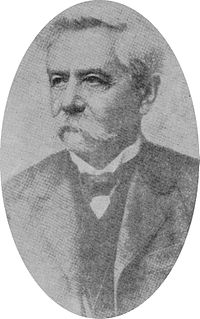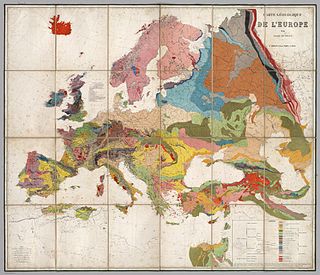
The Mendip Hills is a range of limestone hills to the south of Bristol and Bath in Somerset, England. Running east to west between Weston-super-Mare and Frome, the hills overlook the Somerset Levels to the south and the Chew Valley and other tributaries of the Avon to the north. The hills give their name to the local government district of Mendip, which administers most of the area. The higher, western part of the hills, covering 198 km2 (76 sq mi) has been designated an Area of Outstanding Natural Beauty (AONB), which gives it a level of protection comparable to a national park.

The Wren's Nest is a geological Site of Special Scientific Interest in the Dudley Metropolitan Borough, north west of the town centre of Dudley, in the West Midlands of England. It is one of the most important geological locations in Britain. It is also a Local Nature Reserve, a national nature reserve (NNR) and Scheduled Ancient Monument. The site is home to a number of species of birds and locally rare flora, such as Small Scabious, Milkwort and Quaking Grass. The caverns are also a nationally important hibernation site for seven different species of bat.
Lulsgate Plateau is the name given to the Carboniferous Limestone hills which form a northern outlier of the Mendip Hills, southwest of Bristol, England, approximately 600 feet (180 m) above sea level, which has been occupied since prehistoric times.
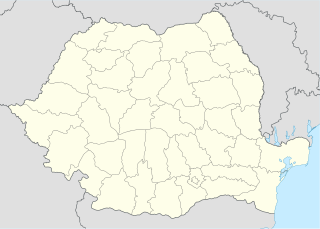
Cotnari is a village and the center of the eponymous commune in Iași County, Romania, in the historical region of Moldavia. It is located north-west of Iași and south of Hârlău, in a major wine-producing region of Romania, and is famous for the wine variety known as Grasă de Cotnari. Cârjoaia, the forest of Dumbrava Roșie, and other sites in Cotnari are regional tourist spots.

Crook Peak to Shute Shelve Hill is a 332.2 hectare (820.9 acre) geological and biological Site of Special Scientific Interest near the western end of the Mendip Hills, Somerset. The line of hills runs for approximately 5 kilometres (3.1 mi) from west to east and includes: Crook Peak, Compton Hill, Wavering Down, Cross Plain and Shute Shelve Hill. Most of the site is owned by the National Trust who bought 725 acres (293 ha) in 1985, and much of it has been designated as common land. It was notified as an SSSI by Natural England in 1952.
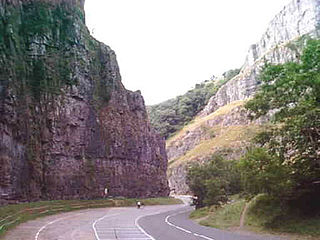
The Cheddar Complex is a 441.3 hectare biological Site of Special Scientific Interest near Cheddar around the Cheddar Gorge and north east to Charterhouse in the Mendip Hills, Somerset, notified in 1952.
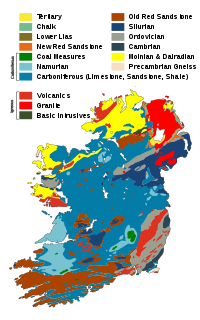
The geology of Ireland consists of the study of the rock formations on the island of Ireland. It includes rocks from every age from Proterozoic to Holocene and a large variety of different rock types is represented. The basalt columns of the Giant's Causeway together with geologically significant sections of the adjacent coast have been declared a World Heritage Site. The geological detail follows the major events in Ireland's past based on the geological timescale.

Muránska planina National Park is one of the youngest national parks in Slovakia. The core area measures 21,318 ha and the protective belt 21,698 ha. It includes 14 smaller protected territories. The headquarters are located in Revúca.
Pietrăria transmitter is a 180-metre guyed mast for FM and TV broadcasting at Pietrăria, a village near Iaşi, Romania. It has a square cross section and is much thicker than most guyed masts of similar height.
The Moldavian Plateau or Pokutian-Bessarabian Upland is a geographic area spanning northeast Romania, most of Moldova, and most of the Chernivtsi Oblast of Ukraine.

Khustain Nuruu National Park, located in Töv Province (Aimag), is a national park of Mongolia. It is also known as Hustai National Park. The Tuul River runs through the park.

The Hlincea Monastery is a Romanian Orthodox monastery in Ciurea, Iaşi metropolitan area, Romania.
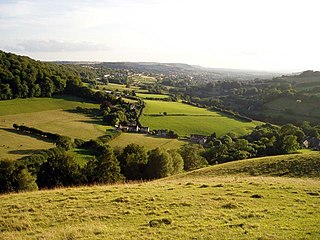
Swift's Hill is a 9.15-hectare (22.6-acre) biological and geological Site of Special Scientific Interest in Gloucestershire, notified in 1966 and renotified in 1984.

Minchinhampton Common is a 182.7-hectare (451-acre) biological and geological Site of Special Scientific Interest in Gloucestershire, notified in 1972.

Rodborough Common is a 116.0-hectare (287-acre) biological and geological Site of Special Scientific Interest in Gloucestershire, notified in 1954. The site is listed in the ‘Stroud District’ Local Plan, adopted November 2005, Appendix 6 as an SSSI and a Regionally Important Geological Site (RIGS). The Common is also a Special Area of Conservation (SAC) under the EU Habitats Directive

Belogorye Nature Reserve is a Russian 'zapovednik', one of the last intact riverine old-growth oak forests, which was once representative of the East European forest-steppe. The reserve is one of the oldest and smallest nature reserves in Russia, first formed in 1924 but reorganized several times since. It is on the southwestern slope of the Central Hills on the western edge of Russia. The reserve is situated in the Belgorodsky District of Belgorod Oblast. The reserve was created in 1935, and covers an area of 2,131 ha (8.23 sq mi).

Central Tsernozemsky Nature Reserve is a Russian 'zapovednik' that protects for scientific study a collection of selected sites of black soil prairie in the southwestern part of the Central Uplands within the middle of the forest-steppe zone. The six sites of the reserve spread out to the southeast of the city of Kursk, in the Medvensky District, Manturovsky District, Gorshechensky District of Kursk Oblast. Officially, the site is named after the biologist VV Alekhine. The reserve was created in 1935, and covers an area of 5,287 ha (20.41 sq mi). In 1978 it was included in the World Network of Biosphere Reserves.

Wouldham to Detling Escarpment is a 311.2-hectare (769-acre) biological and geological Site of Special Scientific Interest which stretches from Wouldham to Detling, north of Maidstone in Kent. Part of it is a Geological Conservation Review site, and it is part of the North Downs Woodlands Special Area of Conservation and the Kent Downs Area of Outstanding Natural Beauty. It is a Nature Conservation Review site, Grade I and it includes three Kent Wildlife Trust nature reserves and a Local Nature Reserve,



